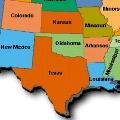Texans Head for the Hills
It's getting on toward the middle of summer in the southwest state of Texas, and as everybody who has ever seen a Western cowboy movie knows, that means hot and dusty days on the wide-open, scrubby West Texas plains. But what the movies never showed us was that Texas is also a place of dense piney woods and hot and steamy coastal lowlands. And if you ask Texans what part of the Lone Star State they treasure, most will immediately point to the rugged but not-so-blistering-hot Texas Hill Country. There are few natural wonders there, roughly in the center of the state. No awe-inspiring canyons, no incredible waterfalls, no rain forests or raging mountain streams. Not many desert cacti, either. The appeal of this tapestry of cedar and oak trees, profuse wildflowers and modest limestone cliffs is more subtle.
These hills along the Pedernales River produced the 36th president of the United States, Lyndon Johnson, and his wife, Lady Bird. The climate is generally pleasant, Mrs. Johnson told visitors. The sun is generally bright. The air seems to be always clean. And the water is pure. The moons are a little fuller here. I guess we all search at times for serenity. And it's serene here. Particularly in the spring, when more than 400 species of wildflowers - Indian paintbrushes, prickly poppies, flowering herbs and the tiny but captivating bluebonnet, the Texas state flower - burst into bloom. And at night, the stars are undimmed by city lights.
Indeed, as the song says, "The stars at night/ are big and bright/ deep in the heart of Texas." And that's exactly where you'll find Texas Hill Country, if you can nudge the Texans out of the way. I'm Ted Landphair.

